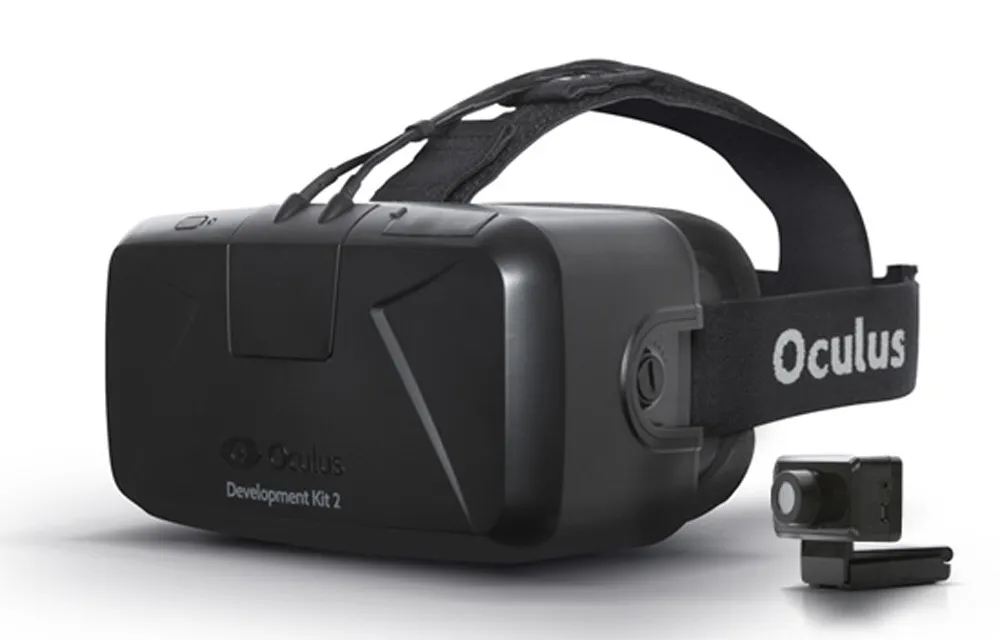Over the last six years consumer VR products evolved considerably, with new capabilities added each year for developers to use in building virtual worlds.
This evolution is sometimes hard to see because VR headsets came in two varieties — wireless and wired. Until 2018, wireless VR trailed the capabilities of wired systems except in a couple respects like cost and portability.
So Samsung’s wireless Gear VR powered by Oculus technically leads the industry with more than 5 million shipped because it was essentially given away for free with the purchase of a compatible phone. It is believed, however, not a large percentage of these headsets are in active use. Instead, people are using VR more when investing at least $20 per game using their less portable but more expensive and immersive Rift, Vive or PSVR.
This gap between portability and immersion is expected to be bridged in 2018 with the first self-contained wireless VR kits rolling out to developers. The first of these will be dev kits based on the Santa Cruz prototype from Facebook’s Oculus, but it is very likely executives at Google, Microsoft, Amazon and Apple also have teams working on similar systems and we’ll hear about them in the next year or two.
In a later post I’ll take a look at some of the predictions laid out by VR leaders over the last few years, as well as the technologies we’re likely to see in future standalone headsets. For now, I wanted to take a look back at the last six years of VR hardware development and break it down in a way that can help everyone understand the long-term direction of innovation.
The below list is a drastic oversimplification of the path toward consumer availability of VR, and it was all arguably set in motion by the FOV2GO project at USC’s mixed reality lab. The project, outlined in the 2012 video below, offered simple instructions to build a cardboard holder for your phone that would produce a simple VR experience — an idea that would become integral to Google’s VR efforts a few years later.
Many of the researchers working at this USC lab would ultimately disperse to found companies like Oculus and Survios, and as VR gained momentum its leaders like Mark Bolas and Paul Debevec went off to join the the efforts underway at Microsoft and Google. They were hired as part of a wave that saw experts in VR and AR around the world snatched up by the world’s biggest tech companies.
To be clear, the shift toward spatial computing is more than just VR or AR headsets. It encompasses nothing less than a complete reengineering of photography to the point of reality capture itself, as well as fundamental rethinking of how computers respond to humans. The more these systems know about you and the world around you, the more believable and interesting they can make virtual worlds and the characters in them. VR and AR systems could use things like eye movement, heart rate and a complete map of your environment with a catalogued list of the objects in it all for the purposes of informing virtual inhabitants how they should interact with you.
If that sounds a little scary you can understand why it is taking so long to get right. Nonetheless, from FOV2GO forward we can identify one headset each year that added new capabilities for developers to use in building virtual worlds.
2013: Facebook’s Oculus Rift DK1
The first Rift development kit, DK1, offered people a chance to turn their heads left and right or up and down and still feel immersed in a virtual world drawn on their PC nearby.
The system exchanged the convenience of FOV2GO, which used a phone, for the increased fidelity of a virtual world drawn by a more powerful PC.
2014: Facebook’s Oculus Rift DK2
The second Rift development kit, DK2, added a camera that made it possible for developers to lean around their virtual environment for the first time without using separate hardware to make it possible.
2015: HTC’s Vive Developer Kit
The first Vive developer kit powered by Valve’s technology had wires to the headset and controllers. The wires to the controllers quickly disappeared as more developers got their hands on one of the first VR systems to let them move freely around the room while using their hands to reach, grab and interact with characters and the environment.
2016: Google’s Daydream View
https://youtu.be/rLLAA4ENIP4
A step backward in terms of freedom to move however you like, the first Daydream View headset in 2016 combined the portability of a phone-based system — it was completely wireless — with a limited pointer-only hand controller.
2017: Microsoft’s Windows-powered VR
https://youtu.be/67yLuiSfMWM
Microsoft took a major step forward in 2017, adding easier setup to wired VR systems. Unlike Rift and Vive, headsets from Microsoft’s partners offer similar freedom to move however you want without any external hardware needed.
2018: Facebook’s Oculus Santa Cruz Developer Kit
Shown for the first time last year with hand controllers, the Oculus Santa Cruz developer kit is expected to ship this year. It takes the ease-of-setup seen in Microsoft’s 2017 solution, combines it with the portability of Google’s 2016 solution, and adds the level of immersion and freedom first seen in HTC’s 2015 solution.
2019 And Beyond
Facebook’s Oculus is likely to learn a lot once developers report back their findings with Santa Cruz, and hands-on time with the hardware may also help inform other manufacturers as they build out their own standalone VR systems.
By Christmas 2019, it will have been four years since I asked Oculus CTO John Carmack about the problems they are clearly trying to solve with Santa Cruz. Is that enough time for Oculus to turn it into a consumer product?


























